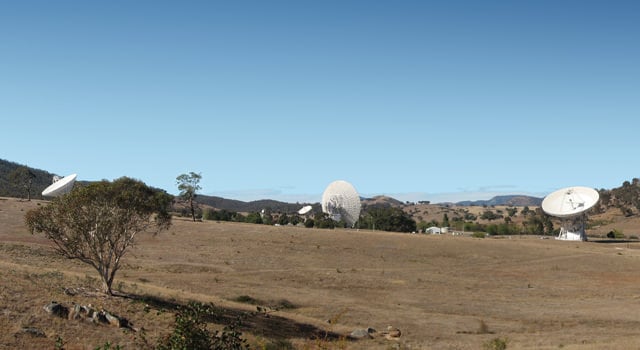[/caption]
All the robotic missions to various points in our solar system wouldn't be possible if not for the
Deep Space
Network. It's not just sending commands and receiving data, but also orbit determination, or keeping track of where the spacecraft are with radiometric tracking data so that spacecraft navigators can get probes exactly where the scientists want them to go. The three 70-meter antennas, located at the DSN complexes at Goldstone, California, Madrid, Spain, and Canberra, Australia are more than 40 years old and show wear and tear from constant use, while new and improved technology and antennas now available would improve operations. NASA announced this week they will begin to replace its aging fleet of dishes with a new generation of 34-meter (112-foot) antennas by 2025.
NASA broke ground this week by beginning to work on the facilities near Canberra, Australia. NASA expects to complete the building of up to three 34-meter antennas by 2018. The decision to begin construction came on the 50th anniversary of U.S. and Australian cooperation in space tracking operations.
"There is no better way to celebrate our 50 years of collaboration and partnership in exploring the heavens with the government of Australia than our renewed commitment and investment in new capabilities required for the next five decades," said Badri Younes, deputy associate administrator for Space Communications and Navigation at NASA Headquarters in Washington.
The new antennas, known as "beam wave guide" antennas, can be used more flexibly, allowing the network to operate on several different frequency bands within the same antenna. Their electronic equipment is more accessible, making maintenance easier and less costly. The new antennas also can receive higher-frequency, wider-bandwidth signals known as the "Ka band." This band, required for new NASA missions approved after 2009, allows the newer antennas to carry more data than the older ones.
Source:
JPL
 Universe Today
Universe Today
